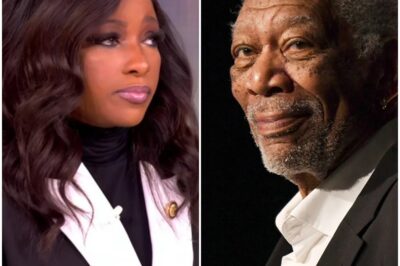
The lights of the arena glared brighter than ever, but beneath the surface, shadows were growing—shadows cast not just by defeat, but by a web of contradictions, controversies, and chaos that threatened to tear the Chicago Sky apart from the inside out. This wasn’t just another season gone wrong; this was a spectacle, a slow-motion car crash unfolding in real time, with Angel Reese at the eye of the storm and the basketball world unable to look away.
It all started with a quote that sent shockwaves through the sports world: “I’ll look back in 20 years and be like—yeah, the reason why we’re watching women’s basketball is not just because of one person…it’s because of me too.” Angel Reese didn’t say Caitlin Clark’s name—she refused to—but everyone knew exactly who she meant. In that one line, Reese staked her claim to the throne, daring the world to recognize her as not just a participant, but a catalyst, a reason for the sport’s meteoric rise. The audacity was electrifying, the confidence undeniable, but it was only the first thread in a tapestry of bold statements and even bolder contradictions that would soon unravel on the national stage.
Reese’s story was supposed to be one of destiny. She claimed she chose Chicago because of Coach Teresa Weatherspoon, painting a picture of loyalty and purpose. But the truth—cold, hard, and inescapable—was that rookies don’t choose their teams. The WNBA draft is merciless; it selects, it assigns, and dreams are reshaped in the blink of an eye. Reese’s narrative was compelling, but it was a fiction, a self-mythologizing flourish that masked a deeper uncertainty about her place in the league. And as the Sky’s season spiraled, that uncertainty became the theme of a franchise in free fall.
When Weatherspoon was fired less than a year into her tenure, Reese’s response was immediate and emotional. She poured her heart out in a tweet, thanking the coach for believing in her, for being the reason she came to Chicago, for standing tall in the face of adversity. “You were an unsung hero in my life,” she wrote, “we built a relationship in a short amount of time that will last forever.” The words were touching, but they couldn’t cover the cracks that had splintered the Sky’s foundation. The team’s 13-27 record, their worst in years, was only the tip of the iceberg. Beneath the surface, a web of deception, tension, and distrust was tightening its grip.
Reese’s statements, always bold, were increasingly at odds with reality. She boasted on her podcast that teams who passed on her in the draft called to say they wished they’d chosen her, that she was wanted and admired even by those who’d picked others. But if that were true, why didn’t they draft her in the first place? Why did her own team, with a higher pick, select Camila Cardoso over her? The logic didn’t add up, and the inconsistencies began to mount. Every claim, every soundbite, every carefully crafted narrative was scrutinized, dissected, and too often found wanting.
But the real drama wasn’t just in the words—it was on the court. The Sky, once a model of teamwork and resilience, had become a cautionary tale. Accusations of stat-padding swirled around Reese as she chased double-doubles and rebounding records in games that were already lost, staying on the floor long after the outcome was decided. The numbers looked good on paper, but the team’s chemistry was in tatters. Camila Cardoso, the other rookie star, called one loss “embarrassing,” her frustration echoing through the locker room. The message was clear: individual glory meant nothing when the team was drowning.
And then there was the physicality—the edge that crossed the line from competitive to dangerous. The Sky became notorious for their aggressive play, especially against Caitlin Clark, the league’s brightest new star and the lightning rod for a national conversation about player safety. In game after game, Clark was battered by flagrant fouls, with Chicago responsible for a staggering percentage of the league’s infractions against her. The numbers didn’t lie: 17% of all flagrant fouls in the WNBA were committed against Clark, and 80% of those came from the Sky. It was a pattern, not a coincidence—a strategy that sparked outrage, debate, and calls for league intervention.
Reese herself was at the center of it all. After a particularly hard foul on Clark, she brushed it off as “just making a play on the ball,” hinting that some players got special treatment from the refs. But the video evidence told a different story—one of excessive contact, frustration, and a willingness to blur the lines of sportsmanship. And when her teammate Chennedy Carter shoved Clark in a non-basketball play, Reese was caught on camera clapping and jumping for joy. Her words said there was no beef with Clark, but her actions screamed otherwise. The contradictions were impossible to ignore.
The fallout was immediate and brutal. Social media exploded with memes, hot takes, and condemnation. Fans and analysts questioned Reese’s priorities, her focus, her commitment to the team. Was she more interested in building her brand than building a winner? Was she chasing highlights at the expense of chemistry? The whispers grew louder, and soon, even her own teammates seemed to be asking the same questions.
Inside the locker room, trust was eroding. The Sky’s season had become a soap opera, with every misstep magnified and every relationship under strain. Players couldn’t trust each other’s words or intentions. The air was thick with suspicion, and the old bonds that held teams together—shared sacrifice, mutual respect, a common goal—were fraying at the edges. The sense of unity that had propelled Chicago to a championship in 2021 was gone, replaced by a toxic brew of ego, ambition, and resentment.
Weatherspoon’s firing was both a symptom and a cause of the chaos. Hired with high hopes and a celebrated pedigree, she struggled to adapt to the pro game, her college experience insufficient for the relentless grind of the WNBA. Communication broke down, play styles shifted, and the team lost its way. Exit interviews revealed a disconnect between coach, players, and management—a lack of direction that left everyone grasping for answers. Reese’s emotional tribute painted Weatherspoon as a martyr, but the truth was more complicated: the coach had lost the locker room, and the franchise was adrift.
The Sky’s aggressive tactics, especially their targeting of Clark, became a league-wide scandal. Each new incident—each flagrant foul, each dangerous play—added fuel to the fire. The league’s image was at stake, and the conversation shifted from wins and losses to integrity and safety. Was Chicago playing to win, or playing to hurt? Was this the new face of women’s basketball, or a betrayal of everything the sport stood for?
Caitlin Clark, for her part, responded with grace and grit. She took the hits, got back up, and kept playing—dropping career-highs, breaking records, and winning fans with her resilience. Her attitude was simple: “It’s just part of basketball.” But behind the stoic words was a growing sense that something had to change. The league couldn’t ignore the problem any longer. Player safety was on the line, and so was the credibility of the WNBA itself.
The Sky’s internal dysfunction was mirrored by instability at the highest levels. Since their championship run, the franchise had become a revolving door of coaches and stars. James Wade, the architect of their title, left midseason for the NBA. Candace Parker, Emma Meesseman, Courtney Vandersloot, Allie Quigley, and Kahleah Copper—all gone. The team was a shell of its former self, and every new coach brought new expectations, new systems, and more confusion. Consistency vanished, chemistry dissolved, and the losses piled up.
The firing of Weatherspoon was just the latest twist in a saga of instability. The message was clear: nothing was sacred, no one was safe. The search for a new coach became a search for identity—a desperate attempt to rebuild not just a roster, but a culture. The next hire would need to be part strategist, part therapist, part visionary—a leader who could heal old wounds, set clear expectations, and restore trust where it had been shattered.
For Angel Reese, the stakes had never been higher. Her connection to Weatherspoon, once a source of strength, now left her future uncertain. Would she buy into a new system, or become a distraction that needed to be managed? Was she a cornerstone to build around, or a symbol of everything that had gone wrong? The new coach would have to decide—and fast.
Camila Cardoso was another bright spot, her potential undeniable. But would she stick around if the dysfunction continued? The Sky couldn’t afford to lose her, not if they hoped to turn things around. The pressure was mounting, and every decision carried the weight of a franchise’s future.
And looming over it all was the question of player safety. The Sky’s reputation for aggressive play had put them in the spotlight for all the wrong reasons. Any new coach would need to address the issue head-on—not just to avoid penalties, but to restore the team’s integrity. The days of looking the other way were over. The league was watching, and so was the world.
The WNBA itself stood at a crossroads. Would it prioritize integrity and sportsmanship, or continue down a path of controversy and chaos? The Sky’s next moves would set the tone—not just for their own future, but for the future of the league. Every choice mattered. Would they chase short-term gains or build for long-term stability? Would they foster a culture of respect, or double down on the tactics that had brought them to the brink?
As the dust settled, one thing was clear: this was more than a season gone wrong. This was a cautionary tale, a warning shot, a moment of reckoning for women’s basketball. The Sky’s freefall had exposed the dangers of ego, the perils of instability, and the high cost of sacrificing team for self. But it had also created an opportunity—a chance to start over, to rebuild, to set a new standard for what the sport could be.
The fans were watching. The league was watching. The players themselves were watching, wondering who would step up, who would lead, who would dare to put the team above the individual. The future of the Sky—and of the WNBA—hung in the balance.
For Angel Reese, for Camila Cardoso, for every player who dreamed of greatness, the message was simple: talent is never enough. Leadership matters. Integrity matters. The game is bigger than any one player, any one coach, any one season. The path forward would be hard, the obstacles daunting, but the rewards—respect, unity, victory—were worth fighting for.
In the end, the real story of the Chicago Sky was not about one player’s bravado, or one coach’s downfall, or even one season’s collapse. It was about the struggle to find meaning in chaos, to build something lasting out of the wreckage, to turn pain into progress. The Sky had fallen, but the dawn was coming. And somewhere, in the heart of the storm, the seeds of redemption were waiting to bloom.
News
“’YOU’RE NOT TELLING THE TRUTH, YOU’RE JUST SPREADING LIES!’—TYRUS DESTROYS THE VIEW HOSTS IN SHOCKING LIVE CONFRONTATION!” In an unforgettable on-air explosion, Tyrus unleashed a savage takedown on The View hosts, boldly declaring, “You’re not telling the truth, you’re just spreading lies!” His voice seethed with intensity as he fired back, “Why is it that every opposing viewpoint is dismissed, while the left rewrites history to suit their narrative?” The room went silent, and the audience erupted in support as the heated clash took over the airwaves. What sparked this brutal confrontation, and how did it shift the entire energy of the show? Watch this jaw-dropping moment unfold below
In one of the most explosive moments in recent television history, Tyrus, the outspoken co-host of Gutfeld!, took down The View in a…
LIVE SHOW SH0CKER: “You know, Jasmine… I’ve been Black for 87 years. If racism was my full-time job, I’d have retired a billionaire by now.” Jasmine Crockett Just Got PUBLICLY EDUCATED BY Morgan Freeman During a Live Debate About Racism — What Happened Next Shocked the Audience In a live debate that no one saw coming, legendary actor Morgan Freeman took the stage and went head-to-head with Jasmine Crockett with a powerful message about accountability, victimhood, and what real progress looks like. His calm but firm words left Crockett visibly flustered — but it was what happened after the cameras rolled that truly shocked the audience. What did Freeman say that instantly changed the tone of the entire conversation… and why are people all over the country still talking about it?
It was supposed to be a routine televised panel—one of those prime-time, high-minded discussions on race in America. But no…
‘ENOUGH ALREADY, ARNOLD!’— Whoopi Goldberg and Sunny Hostin BRING DOWN Schwarzenegger live on The View after his remarks on “ILLEGAL” immigrants!
Actor and former California Governor Arnold Schwarzenegger opened up about being a “proud American and proud immigrant” during a recent…
‘BLACK PEOPLE LIVING IN AMERICA HAVE IT JUST AS BAD AS PEOPLE LIVING IN IRAN’ — Whoopi Goldberg STUNS The View With Iran Comparison That Leaves Panel in CHAOS!
The View broke out into chaos during this morning’s broadcast, with Alyssa Farah Griffin and Whoopi Goldberg clashing over the…
EXCLUSIVE John Kennedy Called ‘a Thug’ by Adam Schiff – Seconds Later, He Makes His Regret It
On a day that began like any other in the marble corridors of the United States Senate, a storm was…
‘IS THIS THE END FOR SCHIFF?’ Adam Schiff Suffers HUMILIATING DEFEAT After Military Parade Hands Trump MAJOR WIN
In the swirling heart of the American capital, where every whispered rumor can ignite a political wildfire, the Senate Armed…
End of content
No more pages to load












